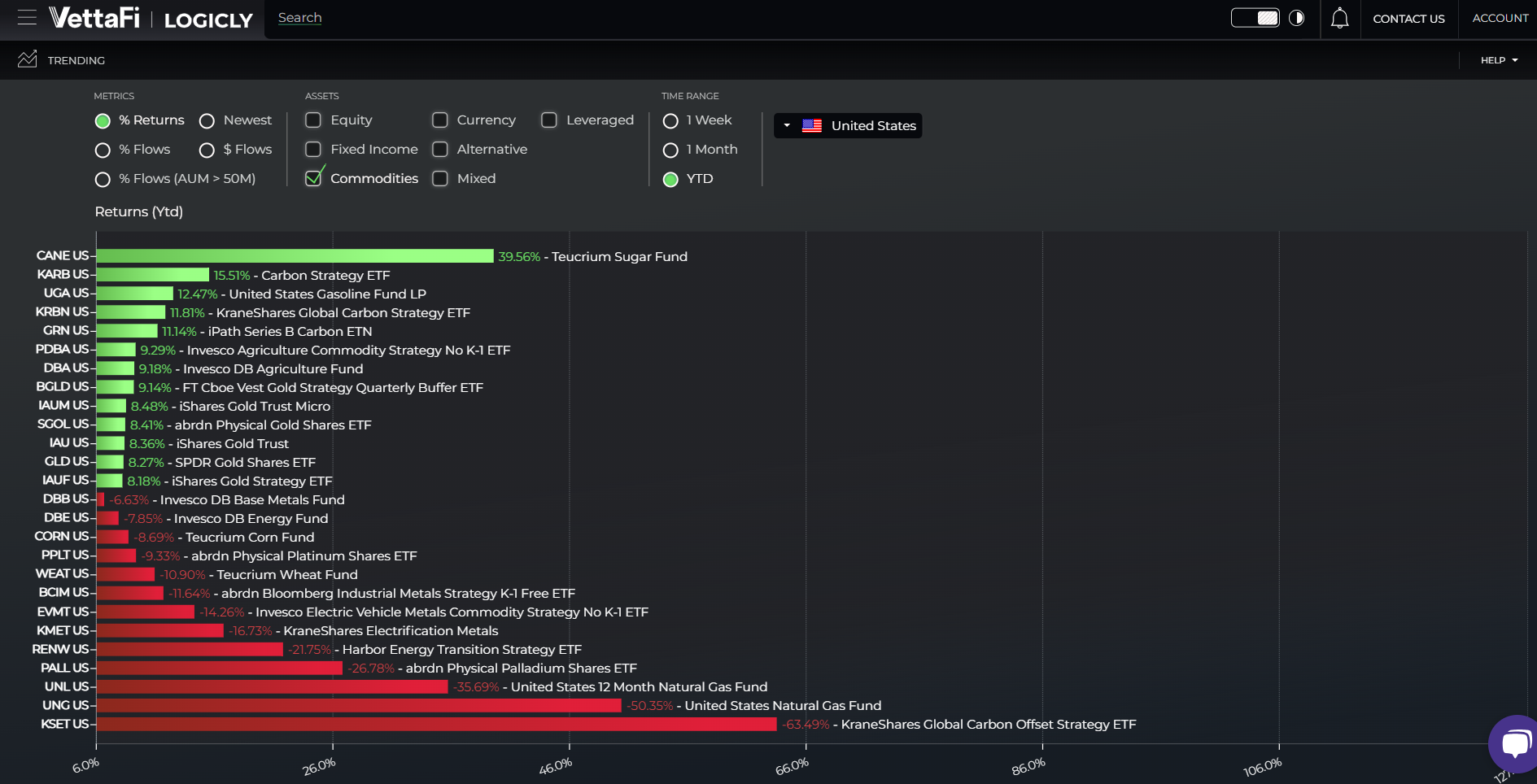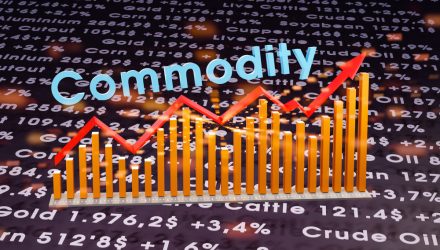Given the current global and national economic environment, investors and advisors remain keen on finding new asset classes to put funds into. The main topics and asset classes investors continue to engage with are U.S. fixed income, U.S. equities, and international equities. This comes as no surprise as these topics are typically ones investors prefer to engage with the most.
The question that then arises is: Which asset classes and investment themes are advisors not as interested in?
In this article, using data obtained from the Explorer platform, we will delve deeper into one of the asset classes that is not catching the attention of investors and advisors. We will also use data from LOGICLY to look at some key characteristics of funds in that asset class. Using this data, we hope to give advisors insight into this asset class’s overall performance and try to answer the question of why attention continues to drop in it.
Advisor Interest Continues to Drop
Commodities are the asset class with the most significant dip in financial advisors’ interest. When referring to how the interest is measured, it is from data collected from the number of digital interactions investors and advisors engage with specific topics on VettaFi platforms. Since the beginning of June, financial advisor engagement with commodities content has dropped 20% per data from Explorer. The long-term data also show this trend as YTD data shows that it has dropped 14% per data from Explorer. The topics that advisors have shown the most interest in during this time frame are leveraged ETFs, U.S. fixed income, and U.S. equities. On top of that, the asset class has lost -2.0% of growth in its AUM YTD and -15.9% in the last year. Commodity ETFs have also lost more than 2 billion inflows YTD.
The significant drop in engagement and flows can be due to many different reasons, but one may be the sporadic nature of the asset class. It is a constant tendency that this asset class has shown unless it is in a super cycle. In addition, the economy as a whole this year has seen an increase in interest in the tech sector. As advisors and investors have paid significant attention to artificial intelligence companies and ETFs. Both of these reasons can be why advisor interest has dropped significantly this year.
Is There a Case To Be Made for Commodity ETFs?
Nevertheless, there are some significant benefits to investing in this asset class. One of them is the opportunity to further diversify one’s portfolio. Commodities ETFs can invest in an abundance of different industries, which can help advisors achieve the much-needed diversification they are looking for in their portfolio.
These funds also do not rely heavily on stocks and other investment vehicles. This makes them a great option for investors looking to invest in funds that can potentially offer less volatility. In addition, most commodities prices will rise with inflation making them a good option to protect one’s portfolio against the continued threat of inflation.
How are popular Commodity ETFs performing?
The Teucrium Wheat Fund (WEAT) and the Invesco Optimum Yield Diversified Commodity Strategy No K-1 ETF (PDBC) are two of the most popular funds for commodity ETFs. In terms of YTD performance, these funds have struggled. On the other hand, they are great options for investors looking to invest in this asset class for the long term. WEAT has a commendable 9.67% 3-year return, and PDBC has an impressive 23.44% return during the same period. That said, the lack of investment interest can be seen in the flows of these funds. PDBC has had net flows of -808.78 M since the start of the year. While WEAT has lost slightly less, with -20.57 M in net flows. This reveals that investor engagement continues to drop in this asset class.
Top Performing Commodity ETFs

Commodity ETFs YTD Returns per LOGICLY.
Despite both WEAT and PDBC underperforming this year, there have been some funds that have performed well. The Teucrium Sugar Fund (CANE) produced the highest YTD return with a 39.56% return. The Carbon Strategy ETF (KARB) produced the second-highest YTD return, posting a 15.51% return. One downside of both funds is they are both extremely small in terms of assets.
One fund that has a significant amount of assets and has performed well is the KraneShares Global Carbon Strategy ETF (KRBN). This fund has $564.2M in assets and an 11.81% YTD return. The fund is relatively young in this space since it started on July 30, 2020. On top of being young, the fund has also experienced -$75.62 M in cumulative flows this year. This is not a significant loss for a fund of this size. However, it still reveals that investor interest in this asset class continues to plummet.
Interest has Dropped
As a whole, this asset class has seen a significant dip in interest from financial advisory firms. The sporadic nature of the asset class, coupled with the uncertainty of the economy and a huge bump in the tech sector thanks to the AI craze, can all be considered contributing factors as to why investors are looking in other directions with their money and interest currently. Using data and analytics platforms like LOGICLY and Explorer can help investment and advisory firms obtain the data needed to answer these questions.
For more news, information, and strategy, visit the Commodities Channel.

